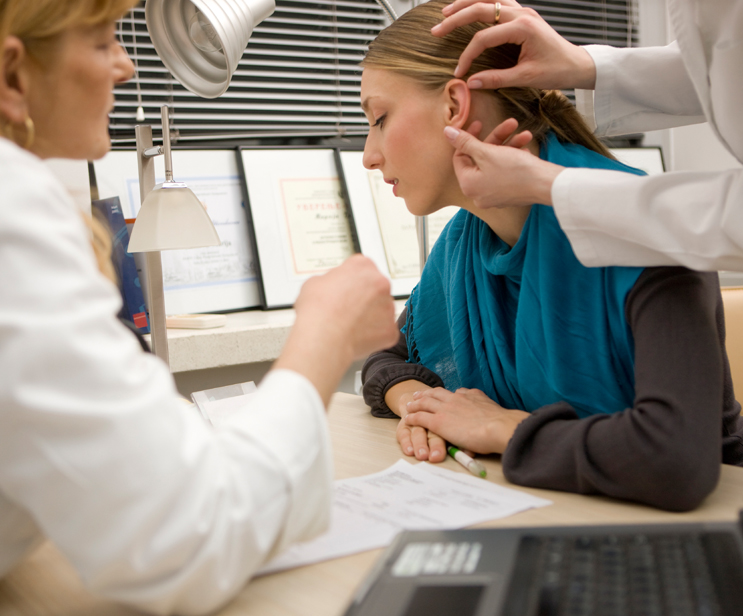The World Health Organization has stated that exposure to noise at or above 85 decibels can damage hearing over time. Noise-induced hearing loss is irreversible and can profoundly affect a person’s quality of life. The risk of exposure to harmful noise levels is real and present for Australian workers.
Research has shown that almost one in three workers are exposed to hazardous noise at work. So, what can be done to mitigate this risk? The answer lies in effective noise monitoring. By understanding how to monitor workplace noise, employers can take the necessary steps to protect their employees from the harmful effects of long-term exposure.
What is noise pollution?
Noise pollution is defined as any unwanted sound that has the potential to harm our health or well-being. It can come from various sources, including traffic, construction, industrial equipment, and neighbours. Exposure to noise pollution has been linked to various health problems, including cardiovascular disease, sleep disturbance, and hearing loss. In some cases, it also leads to anxiety and depression.
There are a few different ways to monitor noise levels in your workplace. The most common method is using a sound level meter, which measures the sound pressure level in decibels (dB). This can be done manually or with an automated system.
Another way to monitor noise levels is through dosimetry, which estimates the amount of exposure someone has to noise over a certain period. This information is used to identify areas where noise levels are high and make changes to reduce exposure.
If you’re concerned about workplace noise pollution, there’re a few things you can do to reduce exposure. Some simple tips include: wearing earplugs or other hearing protection, creating barriers between yourself and the source of noise, and avoiding excessive exposure by taking breaks in quiet areas.
Advertisements
REPORT THIS AD
How does noise pollution affect our health?
There is no safe exposure to noise pollution, and it can significantly impact our health. Short-term exposure to loud noise can cause temporary hearing loss, tinnitus, and dizziness. Long-term exposure can lead to more permanent hearing damage and an increased risk of cardiovascular disease and other health problems.
Noise pollution is a serious public health concern, and it’s important to be aware of its risks. If you work in a noisy environment, ensure you protect your hearing by wearing earplugs or earmuffs. And if you’re concerned about noise pollution in your community, don’t hesitate to contact your local authorities to voice your concerns.
What are the legal limits for workplace noise?
The Australian government has set strict legal limits for noise exposure in the workplace. These limits are based on a person’s hearing ability and are measured in dB(A). To protect workers from hearing loss, the law requires employers to take action if noise at work exceeds the:
- 85 dB(A) – 8-hour exposure limit
- 88 dB(A) – 15-minute Exposure Limit
If your employees are exposed to noise at these levels, you must provide them with effective hearing protection. You must also carry out a risk assessment of the noise exposure and take steps to reduce it where possible.
How can employers monitor workplace noise levels?
There are several ways employers can monitor workplace noise levels in Australia. One way is to use a sound level meter. This device measures the noise levels in your workplace and will indicate whether the noise levels are within safe limits. Another way to monitor workplace noise levels is to ask employees to keep a log of when they are exposed to loud noise at work. This can help you identify patterns and make changes to reduce your employees’ exposure to loud noise.
You can also talk to your employees about their experiences with noise at work and ask them for suggestions on reducing exposure or making the workplace quieter.
Finally, it would be best to consider conducting regular risk assessments of workplace noise levels. This will help you identify potential risks and implement control measures to reduce the risks posed by excessive noise.
What are some tips for reducing noise in the workplace?
There’re a few key things you can do to help reduce noise in the workplace:
- Encourage your employees to take regular breaks away from their workstations. This will help them avoid becoming too fatigued, which can lead to mistakes and accidents.
- Make sure your workstation design is effective in minimising noise. For example, use sound-absorbing materials and ensure no sharp edges or corners could create echoes.
- Use equipment and machinery designed to minimise noise. For example, choose fans and air conditioners that have lower decibel levels.
- Implement a company-wide policy on wearing hearing protection when necessary. This will help ensure your employees are always protected from loud noises.
- Educate your employees on the significance of reducing noise in the workplace and the potential risks of exposure to loud noises over time.
Noise at work can be a major issue, affecting your employees’ health, well-being, and productivity. That’s why it’s important to carry out regular workplace noise assessments.
At Attune, we pride ourselves on providing Australia’s best workplace noise assessment. We use the latest technology to measure noise levels and identify potential risks. We also provide comprehensive reports that detail our findings and recommend solutions.






Comments